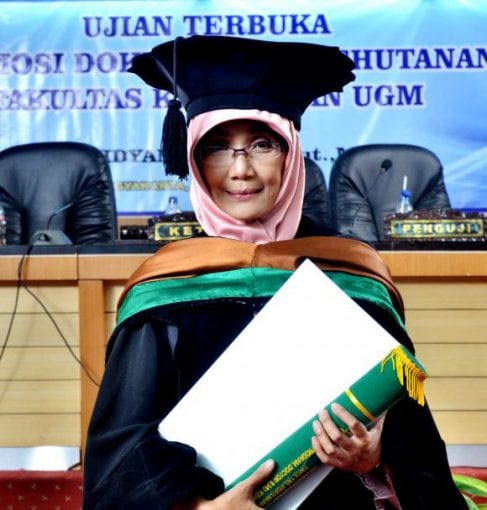
Sandalwood tree population in Indonesia has continued to decline in recent decades, even under threat of extinction.
NTT Provincial Government data in 2010 noted there were only 300 thousand adult sandalwood trees in Timor, Alor, and Sumba. In fact, in 2000 there were still around 1 million sandalwood trees in the region.
“This figure shows a reduction of more than 100 percent in the last 10 years,” explained Yeni Widyana Nurcahyani, S.Hut., M.Sc., a lecturer at the UGM Faculty of Forestry, at the local campus, Friday (10/20).
Maintaining a dissertation on sandalwood research in the Gunung Sewu area in an open doctoral examination at the UGM Faculty of Forestry, Yeni said that the sandalwood population not only faces the threat of extinction, but also has experienced a significant reduction in genetic diversity. Forest fragmentation has significantly decreased the genetic diversity of sandalwood populations in various parts of the world, including Indonesia. Social pressure is suspected to be one of the main causes of the decline in genetic diversity of the sandalwood population or known by the Latin name Santalum album Linn., Santalaceae. Besides that, it is also caused by natural disorders.
“Sandalwood populations in Indonesia which are spread across the islands of Java, Sumba, and Timor also experience genetic and reproductive degradation due to anthropogenic and natural disorders,” he explained.
Seeing the magnitude of degradation in natural sandalwood populations in the islands of Southeast Indonesia, said Yeni, the emergence of new land races on the Gunung Sewu Global Geopark Network can be a promising resource for rehabilitation programs. Not only that, the 1,300 square kilometer limestone mountain region in the central part of Java can also be used as a research and reintroduction vehicle.
“Sandalwood in Sewu Mountain is spread along geographical gradients in various types of landscapes,” he said.
In research conducted by Yeni in Gunung Sewu, it is known that there are differences in the characteristics of the landscape and habitat in the Gunung Sewu area. That difference causes variations in population structure, climatic conditions, and the inter-racial environment of sandalwood along the geographical zone in Gunung Sewu.
Yeni said that spatial and temporal genetic diversity varies along with differences in population structure. This diversity is strongly influenced by population structure, abundance of flowers, and clones.
On that occasion, Yeni submitted recommendations related to sandalwood conservation strategies. According to him, conservation strategies should be arranged according to the genetic basis, genetic diversity, marital system, the level of fragmentation, and clone of each population. The development of conservation strategies must also be integrated with regional and national conservation programs.
“It can be implemented with various reintroduction, rehabilitation, or social forestry schemes, including conservation management with a geopark scheme,” he concluded. # loaded in UGM public relations
